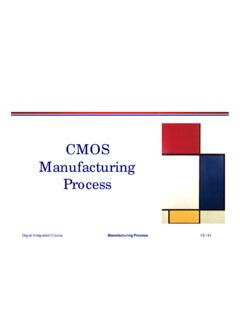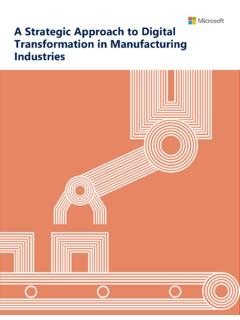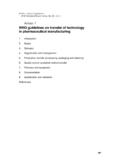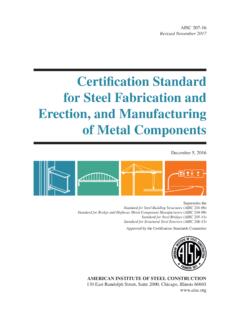Transcription of COVID-19 Guidance for the Manufacturing Industry …
1 COVID-19 Guidance for the Manufacturing Industry Workforce OSHA is committed to protecting the health and safety of America s workers and workplaces during these unprecedented times. The agency will be issuing a series of Industry -specific alerts designed to keep workers safe. If you are in the Manufacturing Industry , the following tips can help reduce the risk of exposure to the coronavirus: Encourage workers to stay home if they are sick. Establish flexible work hours ( , staggered shifts), if feasible. Practice sensible social distancing and maintain six feet between co-workers, where possible. For work activities where social distancing is a challenge, consider limiting the duration of these activities and/or implementing innovative approaches, such as temporarily moving or repositioning workstations to create more distance or installing barriers ( , plexiglass shields) between workstations.
2 Monitor public health communications about COVID-19 recommendations for the workplace and ensure that workers have access to and understand that information. Train workers on how to properly put on, use/wear, take-off, and maintain protective clothing and equipment. Allow workers to wear masks over their nose and mouth to prevent spread of the virus. Encourage respiratory etiquette, including covering coughs and sneezes. Discourage workers from using other workers tools and equipment. Use Environmental Protection Agency-approved cleaning chemicals from List N or that have label claims against the coronavirus. Promote personal hygiene. If workers do not have access to soap and water for handwashing, provide alcohol-based hand rubs containing at least 60 percent alcohol.
3 Provide disinfectants and disposable towels workers can use to clean work surfaces. Encourage workers to report any safety and health concerns. For more information, visit or call 1-800-321-OSHA (6742). OSHA issues alerts to draw attention to worker safety and health issues and solutions. 1-800-321-OSHA (6742) @OSHA_DOL OSHA 4002-04 2020















